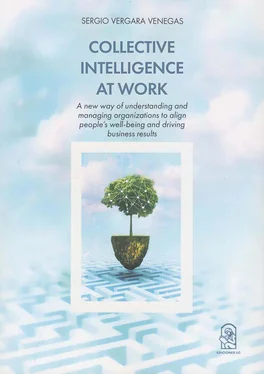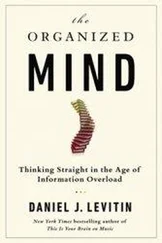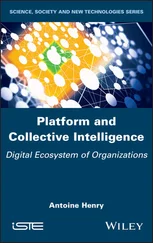JORGE SANHUEZA-RAHMER
Dean of Psychology, Universidad Adolfo Ibáñez
Santiago -Chile, June 2021
FOREWORD TO THE ENGLISH EDITION
When I originally wrote this book, the main concept I sought to capture was the challenge faced by organizations and companies in integrating individual intelligences into a greater whole, what I call “developing maturity.” As this book explains, this is essential to avoid becoming ineffective in solving the problems related to life and progress.
At that moment, many clients, faculty, entrepreneurs and leaders with whom I spoke to, were not ready to accept the need to collaborate and appreciate the work required to address these joint challenges. Many associated the concept of collective intelligence exclusively with technology or teamwork.
Six years have passed and as this book is being published in English, society is facing important changes that reflect the need for a participatory approach to bring about maturity.
Organizations are not isolated from society -where their collaborators live and coexist- they are influenced by it and in turn influence society. The world has been shifting towards social logics that are being expressed through social networks, which in turn have catalyzed the expression of positions and evidenced polarizing differences. In the United States, a mob of demonstrators in favor of outgoing President Donald Trump stormed the Capitol; in Latin America and around the world, social, environmental and business processes are called into question socially, where the idea that what is legal is not necessarily what is fair, became a slogan for all those who demand greater justice, equity, inclusion, diversity, etc.
In addition to this, the pandemic has shown us the world is interconnected for better or for worse and that we need to act together.
In the world of work, institutions and individuals are reinventing themselves to work from home, generating a paradigm shift that incorporates technologies that enhance collaborative processes. Online learning, telemedicine and especially e-commerce have also undergone an accelerated growth, anticipating what was expected to happen in the future. As the vaccine became a reality, the debate on how to return to work began.
The pandemic showed that the reduction and in some cases the elimination of commuting time was one of the most valued aspects of lockdown periods. According to surveys and interviews, parents stated that even though they felt the stress of having to help their children in their studies, they got back two, three or more hours a day to be with their families or just for themselves.
Many leaders expect to come back to the traditional face-to-face office environment as the population is widely vaccinated, while others think that it should be a mix of working styles, taking advantage of the lessons learned from remote work and allowing people to work from home some days of the week.
This dilemma is a good example of the type of challenges that require a collective approach. Problems are cross-cutting and addressed by not one, but several teams and areas that do not necessarily have the same view or even share the same information. They also involve different roles at different hierarchical levels, which implies a multi-appraisal, i.e. what is important for each one differs significantly.
Increasingly, companies and institutions face challenges of this type: multiple areas, several hierarchical levels, asymmetric information regarding problems, added to the scarce availability of spaces for inter-area participatory discussion and the urgent need to develop relational skills to address challenges where it is important to not suppress differences, but to build on them.
Agile methodologies, which are widely used today to make transformations, require this type of approach, as they often consider issues that cut across multiple areas.
A good shipping system will not work if the reality of the departments involved is not considered, for which it is not enough to gather the teams, give them a presentation and spend the last ten minutes asking questions. We need to understand how the change in processes and technology affects their work dynamics, so that the necessary adjustments can be made for the project to be successful. Also, in the event that some of the groups involved show resistance or a low-level of commitment to the initiative, we need to understand what perspective they have on the subject and from what information they are basing their judgments on about the project in question.
If we do this, we can generate a dialogue that will allow them to be included into building solutions. It is not just a matter of “selling” them the project as is usually done, because in this perspective the implementing group has in mind only its own vision of the problem, which they tend to push without paying attention to the signals that allow them to anticipate problems that will blow-up later, when the project is implemented.
This approach is not only an intellectual challenge, but also an emotional one, which requires strategies to understand the level of maturity and shared understanding of the group involved, in order to design an effective strategy.
The traditional approach to change management is modified by incorporating tools to ensure that differences are put at the service of building a better solution.
In just a few years, society has moved, and companies need to recognize which challenges require a more transversal approach such as collective intelligence, among which is the work environment, but also any transversal project where the participation of the involved and dissimilar areas is relevant for success. The challenge is -what this book calls- building maturity. That is to say, finding the keys that allow the group involved in the problem to develop a shared understanding with greater levels of speed and agility more quickly and smoothly of what is really being sought to be solved. This begins in the act of understanding the perspective of the other parties from their subjectivity, recognizing why they look at the problem the way they do, where the experience and understanding of each area is valid, beyond whether or not it is correct. This allows to generate relationships of mutual legitimacy, changing the focus from the implementing group and the group “subject of change” to one of co-construction. This does not imply that we have to give each party what they want, because what we seek to create is not a transactional relationship, but the awareness that we are a community, and that only the understanding of the underlying problem will help us to move towards effective solutions. Thus each participant in a collective process has the challenge of becoming a “connecting neuron” that seeks to understand others and then helps the group reach a perspective on how the different points of view explain why the current dynamics occur as they do. When the group is able to see how they affect each other and what information was not known or visible to them, they are able to see how it affects the others and this creates a shared feeling and commitment to move together.
The approach to the work environment is therefore a reflection of how an organization learns to generate collective intelligence, to create an organization that learns to learn according to how the world and the society that surrounds us is changing and how we are a part of it. A capacity that, in the present and in the future, increasingly full of diversity and complexity, becomes fundamental.
Sergio Vergara, June 2021
FOREWORD
Building collective intelligence in the organization: A new way of understanding and managing the organizational climate in order to align the well-being of people with the management of the company
I have spent many years studying and practicing in the vast world that is management. I started as an engineer looking at management from the mathematical models and well-structured problems of operational research. Knowing how to deal with these issues is crucial in the operation of the modern world. Without them, airplanes could not take off and large production plants could not operate.
Читать дальше












